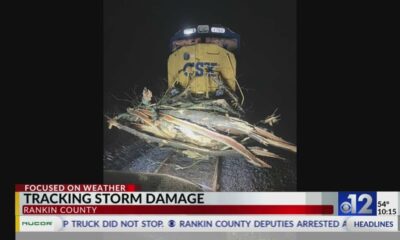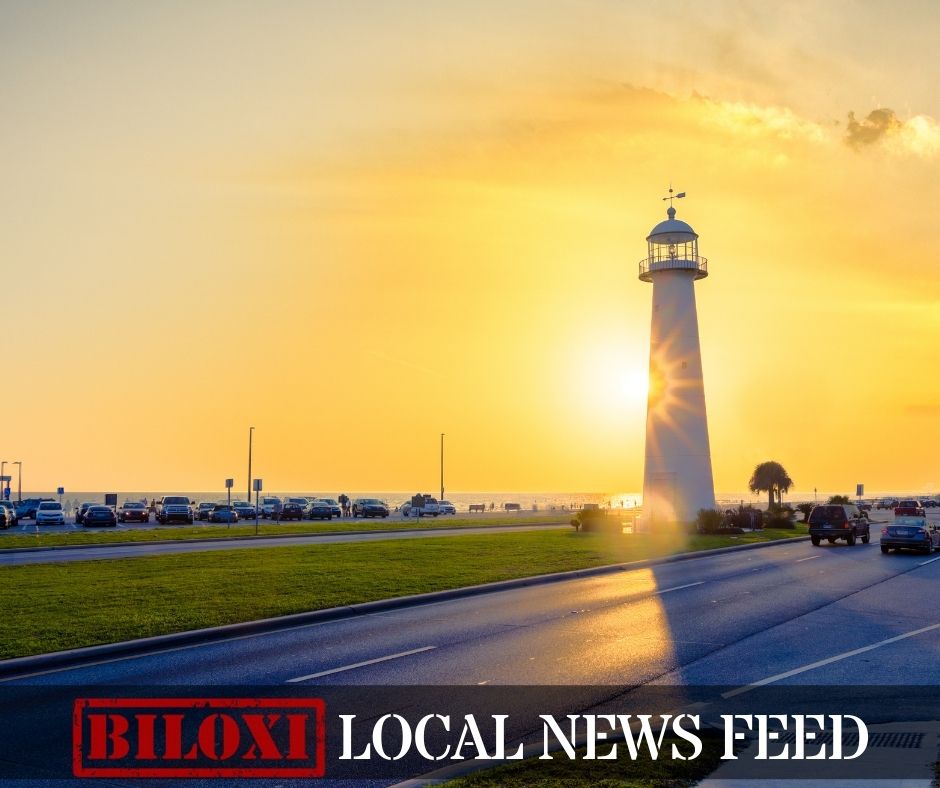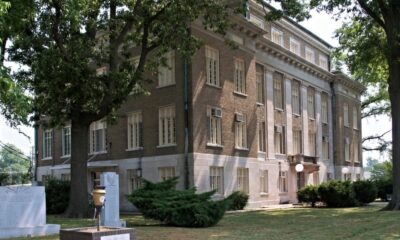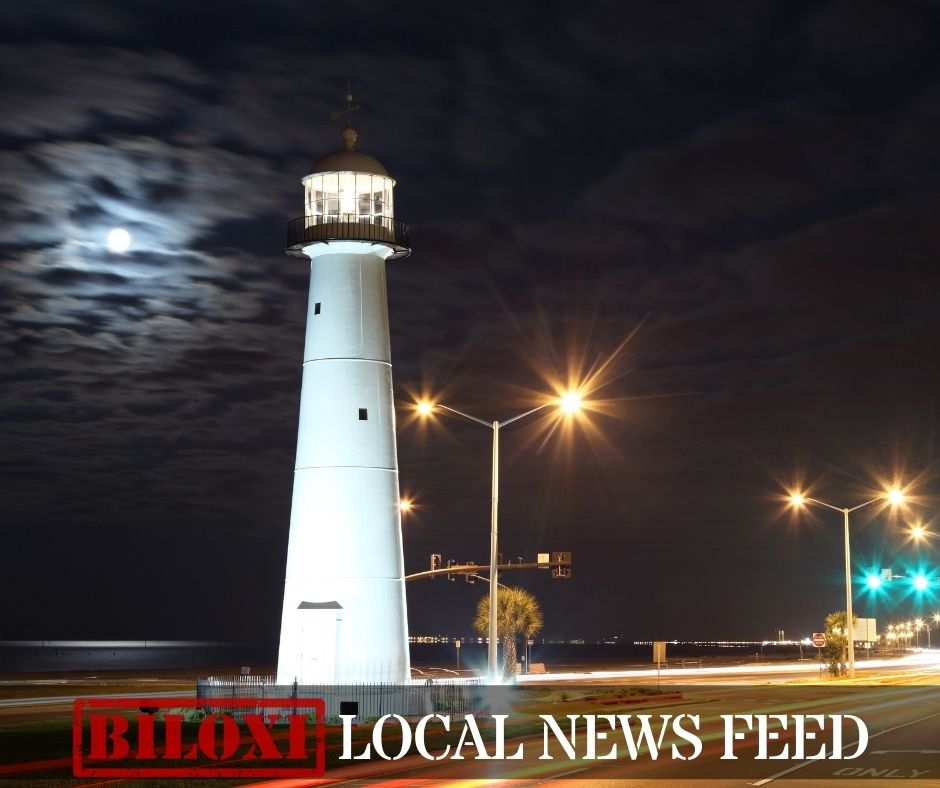Mississippi Today
Mississippi teen among those killed in suspected terrorist attack in New Orleans

NEW ORLEANS (AP) — A driver wrought carnage on New Orleans’ famed French Quarter early on New Year’s Day, killing 10 people as he rammed a pickup truck into a crowd before being shot to death by police, authorities said.
More than 30 people were injured as Wednesday’s attack turned festive Bourbon Street into macabre mayhem.
Among those killed was 18-year-old Nikyra Cheyenne Dedeaux of Gulfport, NOLA.com reported Wednesday. Her mother said that her daughter wasn’t supposed to be in New Orleans, and that she had sneaked over for the night with her 18-year-old cousin and a friend.
“I just want to see my baby,” her mother Melissa Dedeaux, 40, told NOLA.com. “She was the sweetest person. She would give you anything, anything.”
The FBI is investigating the attack as an act of terrorism. An Islamic State group flag was found in the vehicle.
The FBI identified the driver as Shamsud-Din Jabbar, 42, a U.S. citizen from Texas and said it is working to determine Jabbar’s potential associations and affiliations with terrorist organizations. Authorities are also looking into whether other people may have been involved.
Jabbar was killed by police after he exited the vehicle and opened fire on officers, police said. Two officers were shot and are in stable condition, police said. They were in addition to 33 people injured in the vehicle attack.
A photo circulated among law enforcement officials showed a bearded Jabbar wearing camouflage next to the truck after he was killed. The attack happened around 3:15 a.m. in an area teeming with New Year’s revelers.
Investigators recovered a handgun and an AR-style rifle after the shootout, a law enforcement official said. The official was not authorized to discuss details of the investigation publicly and spoke on condition of anonymity.
The FBI said a potential improvised explosive device was located in the vehicle and other potential explosive devices were also located in the French Quarter.
New Orleans Mayor LaToya Cantrell described the killings as a “terrorist attack.”
New Orleans Police Superintendent Anne Kirkpatrick said the driver was “hell-bent on creating the carnage and the damage that he did.”
“It was very intentional behavior. This man was trying to run over as many people as he could,” Kirkpatrick said.
New Orleans city councilmember Helena Moreno told WWL-TV that after being briefed on the attack, she understands that “there is a potential that other suspects could be involved in this and all hands on deck on determining who these individuals are and finding them.”
The area is a prime New Year’s Eve destination, and tens of thousands of college football fans were in the city for Wednesday night’s Sugar Bowl playoff quarterfinal between Georgia and Notre Dame at the nearby Superdome.
“When I got to work this morning, it was kind of pandemonium everywhere,” Derick Fleming, chief bellhop at a downtown hotel, told The Associated Press. “There were a couple of bodies on the ground covered up. Police were looking for bombs in garbage cans.”
University of Georgia President Jere Morehead said a student was critically injured in the attack and is receiving medical treatment.
Zion Parsons told NOLA.com that he and two friends were leaving a Bourbon Street restaurant when he heard a “commotion” and “banging” and turned his head to see a vehicle barreling onto the pavement toward them. He dodged the vehicle, but it struck one of his friends.
“I yell her name, and I turn my head, and her leg is twisted and contorted above and around her back. And there was just blood,” Parsons said. The 18-year-old said he ran after hearing gunshots shortly thereafter.
“As you’re walking down the street, you can just look and see bodies, just bodies of people, just bleeding, broken bones,” he said. “I just ran until I couldn’t hear nothing no more.”
Bourbon Street has had barriers to prevent vehicle attacks since 2017, but Wednesday’s rampage happened amid a major project to remove and replace the devices, which left the area vulnerable. Work began in November and was expected to be largely wrapped up in time for the Super Bowl in the city in February.
Hours after the attack, several coroner’s office vans were parked on the corner of Bourbon and Canal streets, cordoned off by police tape with crowds of dazed tourists standing around, some trying to navigate their luggage through the labyrinth of blockades.
“We looked out our front door and saw caution tape and dead silence and it’s eerie,” said Tessa Cundiff, an Indiana native who moved to the French Quarter a few years ago. “This is not what we fell in love with, it’s sad.”
Elsewhere, life went on as normal in the city known to some for a motto that translates to “let the good times roll.”
Close to where the truck came to rest, some people were talking about the attack while others dressed in Georgia gear talked football. At a cafe a block away, people crowded in for breakfast as upbeat pop music played. Two blocks away, people drank at a bar, seemingly as if nothing happened.
“We recognize that there are tourists around us, and we urge all to avoid the French Quarter as this is an active investigation,” Louisiana Gov. Jeff Landry said. “We understand the concerns of the community and want to reassure everyone that the safety of the French Quarter and the city of New Orleans remains our top priority.”
President Joe Biden, speaking to reporters in Delaware, said he felt “anger and frustration” over the attack but would refrain from further comment until more is known.
“My heart goes out to the victims and their families who were simply trying to celebrate the holiday,” Biden said in a statement. “There is no justification for violence of any kind, and we will not tolerate any attack on any of our nation’s communities.”
The attack is the latest example of a vehicle being used as a weapon to carry out mass violence, a trend that has alarmed law enforcement officials and that can be difficult to protect against.
A 50-year-old Saudi doctor plowed into a Christmas market teeming with holiday shoppers in the German city of Magdeburg last month, killing four women and a 9-year-old boy.
A man who drove his SUV through a Christmas parade in suburban Milwaukee in 2021 is serving a life sentence after a judge rejected arguments from him and his family that mental illness drove him to do it. Six people were killed.
An Islamic extremist was sentenced last year to 10 life sentences for killing eight people with a truck on a bike path in Manhattan on Halloween in 2017. Also in 2017, a self-proclaimed admirer of Adolf Hitler slammed his car into counterprotesters at a white nationalist rally in Charlottesville, Virginia and is now serving a life sentence.
Stephen Smith, Chevel Johnson and Brett Martel in New Orleans, Jeff Martin in Atlanta, Alanna Durkin Richer and Zeke Miller in Washington and Darlene Superville in New Castle, Delaware, contributed to this report.
This article first appeared on Mississippi Today and is republished here under a Creative Commons license.![]()
Mississippi Today
On this day in 1939


Jan. 5, 1939

Pauli Murray applied to the University of North Carolina law school, sparking white outrage across the state.
“The days immediately following the first press stories were anxious ones for me,” she recalled. “I had touched the raw nerve of white supremacy in the South.”
A year later, she was jailed twice in Virginia for refusing to give her seat on a Greyhound bus. She graduated first in her class at Howard University School of Law, but Harvard University wouldn’t accept her because of her gender. (Harvard didn’t admit women until 1950.) Instead, she became the first Black student to receive Yale Law School’s most advanced degree.
In 1942, she helped George Houser, James Farmer and Bayard Rustin form the Congress of Racial Equality, known as CORE. Four years later, she became a deputy attorney general in California. Thurgood Marshall described her 1951 book, “States’ Laws on Race and Color,” as the “bible” for civil rights lawyers.
A year later, she lost her post at Cornell University because of McCarthyism. She left her law career to work on her writing at MacDowell Colony, a haven for artists and writers in New Hampshire, where she worked on her first memoir alongside James Baldwin.
“Writing is my catharsis,” she said in an interview. “It saved my sanity. But you cannot sustain anger for years and years. It will kill you.”
She researched her ancestry. “If you call me Black, it’s ridiculous physiologically, isn’t it? I’m probably 5/8 white, 2/8 Negro — repeat American Negro — and 1/8 American Indian,” she said. “I began years before Alex Haley did. I’m always ahead of my time.”
She also penned a book of poems, “Dark Testament,” writing the words, “Hope is a song in a weary throat.”
During her time as a professor in Ghana in the early 1960s, she began to accept that ancestry, she said.
“The difficulty is coming to terms with a mixed ancestry in a racist culture,” she said.
She said she didn’t consider her experience unique.
“I don’t believe that, ‘You came over in chains so how can you feel American?’ That’s poppycock. Thousands are just like me. In fact I probably feel more American than many whites. I just want this country to live up to its billing.”
After returning from Africa, President Kennedy appointed her to his Committee on Civil and Political Rights. She worked with Martin Luther King Jr. and other top civil rights leaders and took part in the 1963 March on Washington. But she remained critical of “the blatant disparity between the major role which (Black) women have played and are playing in the crucial grass-roots levels of our struggle and the minor role of leadership they have been assigned in the national policy-making decisions.”
She helped found the National Organization of Women. In 1977, she became the first Black woman to serve as an Episcopal priest.
“Being a priest is the hardest thing I’ve ever done,” she said. “The first 48 hours were the most difficult of my life. I found myself on the receiving end of tremendous human problems I didn’t know how to handle.”
She rejected the idea that she should slow down. “We shouldn’t stop growing ‘til our last breath,” she said. She died eight years later, and in 2012, the Episcopal church named her as a saint.
In 2021, a documentary on Murray was released, using her own voice and words as narration. The documentary also includes an interview with law professor Anita Hill.
Even though Murray knew that the odds were often against her success, she kept fighting for what she believed was right,” Hill said. “It takes a lot of courage to be hopeful.”
This article first appeared on Mississippi Today and is republished here under a Creative Commons license.![]()
Mississippi Today
Trump, lauded by some as a free speech advocate, files a barrage of lawsuits against news outlets

For many there is no more cherished right enshrined in the U.S. Constitution than the freedom of speech and, of course, its accompanying freedom of the press.
During the November election cycle, various people like billionaire Elon Musk and podcaster Joe Rogan spoke of the importance of free speech. Both cited part of their reasoning for supporting Donald Trump was his commitment to free speech.
Those and many other self-professed free speech proponents are noticeably quiet as Trump works to curtail freedom of speech to a degree that perhaps has never been seen in this country.
Trump, as part of a broad legal attack on the American press, is suing the Des Moines Register because the newspaper published a poll showing he was trailing Democratic Vice President Kamala Harris a few days before the November election. The president-elect also is suing longtime pollster Ann Selzer, whose poll the newspaper published. Granted, the Selzer poll of Iowa voters was way off, but because a poll is wrong has never been viewed as a reason to sue a news outlet that chooses to run it.
And ABC, one of the nation’s legacy broadcast networks, has already settled with Trump another lawsuit that many believe the network eventually would have won.
Historians and journalism advocates view Trump’s Des Moines Register lawsuit, ABC lawsuit and others as an effort to curtail press freedom. The lawsuits, they argue, create a fear of reporting on powerful people with deep pockets, and they force news outlets to expend large sums of money to defend lawsuits that have in many cases been viewed as frivolous.
A deeper expressed fear is that the Trump lawsuits are designed to convince a U.S. Supreme Court loaded with Trump sympathizers to curtail the press freedoms that this country has long enjoyed.
It is important to remember that at one time in the nation’s history, newspapers were largely extensions of the political parties and particular politicians — something that is no longer the case for most mainstream or legacy media outlets.
The late James Baughman, the late mass communications historian at the University of Wisconsin-Madison, said in a 2011 Center for Journalism Ethics speech, “Papers in opposition to Andrew Jackson in 1828 attacked him for marrying a woman before her divorce had been finalized. He was the violator of marital virtue, a seducer. Jackson, one paper declared, ‘tore from a husband the wife of his bosom.’ Pro-Jackson newspapers insisted on the general’s innocence and accused his critics of violating his privacy. There was no objective, middle ground.”
Baughman pointed out that in 1884, the Los Angeles Times did not like that Democrat Grover Cleveland had won the presidency, so the paper “simply failed to report this unhappy result for several days.”
The history of American media, however, may mean little to Trump. He is suing the Pulitzer Prize committee for reaffirming the coveted award to The New York Times and Washington Post for their reporting of Trump’s campaign ties with Russia during the 2016 campaign. He is also suing CBS and its news show 60 Minutes for how an interview with Democratic presidential nominee Kamala Harris was edited.
There are, of course, countless examples of Fox News and other Trump-friendly television networks editing clips of interviews or news segments in ways that could be seen as favorable to Trump. Fox has said simply the edits were made for the sake of brevity. Advocates of press freedom would argue the practice is Fox’s guaranteed legal right, though they may disagree with the conservative outlets’ decisions in terms of journalism ethics.
Fox did pay a record $787 million to Dominion, a voting machine manufacturer, because of allegations aired on the network that their machines changed votes to favor Joe Biden in the 2020 election. The lawsuit was based on financial harm incurred by Dominion as a result of the false reports.
Many of those allegations were made not by Fox employees, but by Trump supporters who were network guests. Emails obtained during the lawsuit reveal that the Fox staff did not believe the unfounded allegations but repeatedly allowed the Trump allies to make them.
The so-called legacy media, including Fox in this instance, have long been legally responsible for what other people say on their news outlets. A newspaper, for instance, can be held liable for making false claims about a person in a letter to the editor it publishes.
Free speech, of course, does not mean people or news outlets cannot face consequences for what they say. A company could choose to fire an employee for offensive speech, and outlets are certainly not obligated to publish what they view as offensive or false claims.
But this latest barrage of lawsuits from Trump, that so-called advocate of free speech, have many experts questioning how far the long-held American free speech principles could be stretched.
This article first appeared on Mississippi Today and is republished here under a Creative Commons license.![]()
Mississippi Today
On this day in 1965


Jan. 4, 1965

Five busloads of Black Mississippians arrived at the U.S. Capitol to challenge the seating of Mississippi’s all-white congressional delegation.
Those in charge in Washington initially had little sympathy because the Mississippi Freedom Democratic Party had rejected the compromise at the 1964 Democratic National Convention, said SNCC leader Michael Thelwell.
“We were absolutely persona non grata and the pariahs of beltway politics,” he said.
But their cause soon found some support on the floor of Congress when 149 members sided with them. Suddenly, the Mississippi Freedom Democratic Party could question the state’s top leaders. Suddenly, these white politicians, the most powerful people in Mississippi, found themselves using courtesy titles toward Black Americans — something they had refused to do since slavery ended.
Although those in Congress eventually took their seats, “it shook them,” recalled SNCC leader Victoria Gray. “That vote just really turned things upside down.”
This article first appeared on Mississippi Today and is republished here under a Creative Commons license.![]()
-

 News from the South - Florida News Feed5 days ago
News from the South - Florida News Feed5 days ago2025 opens with strong punch of cold air slated to send Florida into a freeze. Here’s what to expect
-
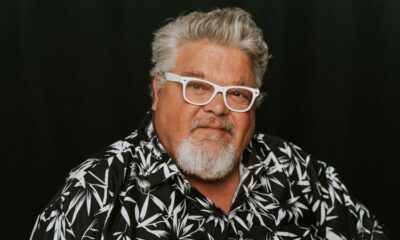
 Our Mississippi Home2 days ago
Our Mississippi Home2 days agoUSM Awards Honorary Degree to Renowned Country Music Songwriter
-
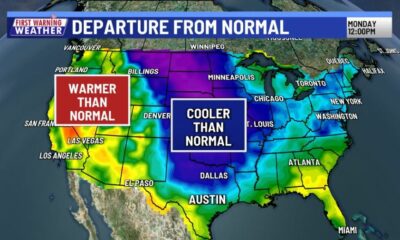
 News from the South - Texas News Feed6 days ago
News from the South - Texas News Feed6 days agoFirst Warning: Signs of wintry weather next week
-
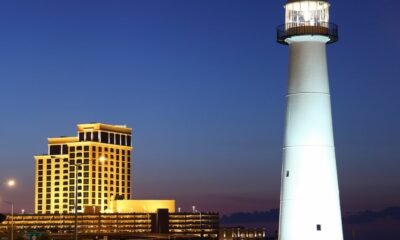
 Local News2 days ago
Local News2 days agoHow to catch the Quadrantids, the first meteor shower of 2025
-
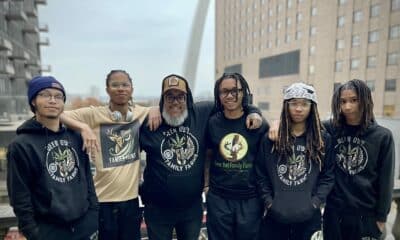
 News from the South - Missouri News Feed3 days ago
News from the South - Missouri News Feed3 days agoFamily aims to open cannabis cultivation facility in North St. Louis • Missouri Independent
-

 SuperTalk FM3 days ago
SuperTalk FM3 days ago2 teens arrested for trying to carjack Hinds County reserve deputy
-
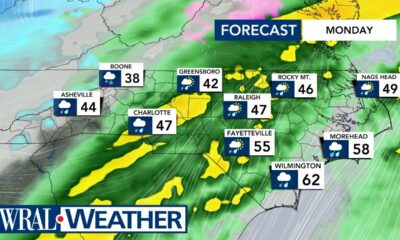
 News from the South - North Carolina News Feed3 days ago
News from the South - North Carolina News Feed3 days agoNorth Carolina Forecast: Cooler weather ahead with freezing lows through the weekend
-

 News from the South - North Carolina News Feed4 days ago
News from the South - North Carolina News Feed4 days agoConway falsely claims NC officials covering up storm deaths

